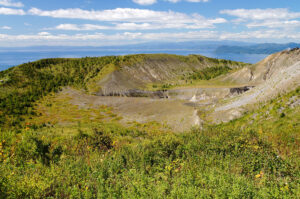Cape Suzu (Suzu City, Ishikawa Prefecture)
Overview (history, characteristics, attractions)
Cape Suzu, located in Suzu City in the northeastern part of the Noto Peninsula, is a cape jutting out into the Sea of Japan, boasting a magnificent landscape. It is characterized by dynamic coastal beauty created by uplifted sea cliffs, reefs, and cliffs carved by the waves, and shows different faces in each of the four seasons. The locals have a history of living alongside the sea, through fishing and salt production, and the surrounding area retains the culture and landscape resources derived from this. A major attraction is being able to enjoy the early morning sunrise and the impressive view of the Sea of Japan during stormy weather.
Highlights
- Cape observation deck and cliff view: A grand panorama opens up to the Sea of Japan. The contrast between the waves and the rocks is beautiful.
- Lighthouses and lookout points: On clear days, you can see far into the distance, making this a popular spot for taking photos of both sunsets and sunrises.
- Coastal erosion and reefs: The unique topography created by rough waves is ideal for observing nature.
- Bird watching: Depending on the season, you may be able to observe seabirds (it's a good idea to bring binoculars).
- A base for nearby tourist attractions: It is easy to combine with other tourist spots around Suzu, such as Mitsukejima (a rocky island similar to Gunkanjima) and Rokkozaki.
Access (nearest station, transportation, etc.)
Public transportation is limited, so please check the schedule in advance. Below are some typical access examples.
- The nearest major stations are Nanao Station and Anamizu Station (hubs for travelling to Noto). There is a bus route from Anamizu and Wajima to Suzu.
- Bus: Noto Railway and local buses (such as Noto Kotsu) operate, but please check the timetable in advance as there are few buses.
- By car: Approximately 2.5 to 3.5 hours by car from Kanazawa City (depending on the season and road conditions). It's convenient to visit while driving around the Noto Peninsula. While there are often free or paid parking spaces around the cape, the number of spaces is limited.
- By plane: If you are using Noto Airport, you will need to travel from the airport by rental car or bus (travel time varies depending on the route).
*Please be sure to check the latest timetables, road information, and transportation status before departing.
Estimated stay (estimated time required)
- Short-term sightseeing: If you just want to enjoy the view, it will take about 30 minutes to an hour.
- A leisurely stroll and photography session: 1-2 hours. This is for observing and taking photos while walking around the cape.
- If you also visit nearby spots: Half a day to a full day. It's easy to make a full-day trip by combining Mitsukejima, Rokkozaki, and Wajima Morning Market.
Nearby spots
- Mitsukejima (a rocky island known as Gunkanjima) - A popular photo spot in Suzu City.
- Rokkozaki - A cape located at the tip of the Noto Peninsula, famous for its lighthouse and sunrise.
- Wajima Morning Market (Wajima City) — A traditional morning market featuring fresh seafood and folk crafts (easily reached by car).
- Local restaurants and seafood direct sales outlets - There are many shops where you can taste the bounty of Noto's sea.
Things to be aware of (crowds, manners, seasonal precautions, etc.)
- Public transport is infrequent: Buses and trains run infrequently, so be sure to check return journey times in advance.
- Be aware of the weather: In winter and stormy weather, the Sea of Japan can become rough and the wind can become very strong, so please take measures to protect yourself from the cold and wind and ensure your safety. Do not go near the water's edge.
- Watch your step: The beach and cliffs can be slippery in places, so wear comfortable shoes.
- Crowds: During peak season (summer vacation and long weekends), the number of tourists increases and parking lots can become crowded. We recommend arriving early.
- Respect nature and local areas: Always take your rubbish with you, avoid touching plants, rocks and coastal life, and stay away from private property and restricted areas.
- Mobile phone signals and facilities: Some areas may have weak signals and limited toilets and food and drink options, so it's a good idea to bring some drinks and a map.
(Note) Information is subject to change. Please check the official websites of the Suzu City Tourism Association and transportation operators for the latest information on bus times, parking availability, and the operating status of surrounding facilities before visiting.



